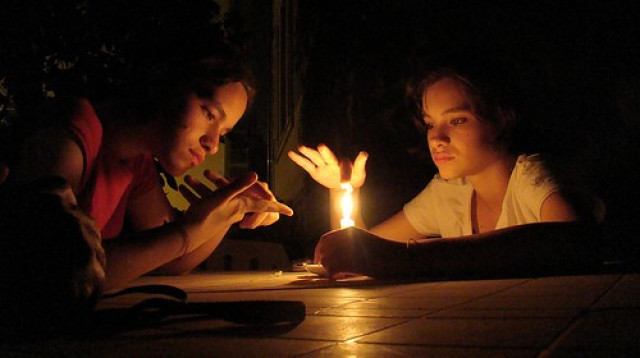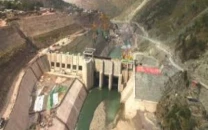Blackout to continue for 7 years: WAPDA chief
No respite from power outages before 2018.

Amidst rising temperatures and daily, protracted power outages, the Water and Power Development Authority (Wapda) has dropped another bombshell: The electricity crisis will persist for at least another seven years.
Wapda Chairman Shakeel Ahmed Durrani told the National Assembly standing committee on water and power on Tuesday that power outages could not be stopped till 2018 due to the imbalanced utilisation of power generation resources.
While the session was in progress an irate member of the committee from Okara – Sajjadul Hassan – strongly criticised the state-owned power generation companies for 22 hours a day blackouts in his district. “It is unacceptable,” Hassan said and threatened to set the office of Pakistan Electric Power Company (Pepco) on fire, if the situation did not improve. “The electricity demand could swell up to 130,000MW by 2030,” Durrani said. However, the government was committed to shifting power generation from thermal to hydel by 50 per cent to overcome the crippling crisis.
According to him, the Gilgit-Baltistan region has the capacity to generate 60,000 to 100,000MW electricity. Therefore, he said, this potential must be tapped to add more megawatts to the national grid.
Durrani said his authority has started work on Diamer-Bhasha Dam and that its ground breaking ceremony would be held next month in the presence of President Asif Zardari. Other than that, he said the overall power generation capacity would increase by 15 per cent after the upgradation of Mangla Dam. The Wapda chief said that per unit generation cost of thermal power was Rs10.18 per unit – 870 per cent higher than power generated through Hydel sources which costs Rs1.05 per unit.
When asked about the current status of the Neelam-Jhelum hydropower project, Durrani claimed a 16-kilometre-long tunnel of the project being built near Muzaffarabad had been constructed.
The Wapda chairman informed the committee that the overall power generation capacity was around 13,669MW against the demand of about 18,114MW, showing a shortfall of 4,445MW. He added that 600MW could be added to the national grid if the adequate furnace oil was made available to the companies. Currently, the power sector is receiving 20,000 tons of furnace oil per day against the demand of 28,000 tons.
“The power companies cannot pay off their oil bill to the suppliers due to circular debts,” he said and added that around 500MW shortfall could be overcome if the gas companies ensured proper supplies to the power generation companies. However, in a statement issued later in the evening, the ministry of water and power said the government has added about 3500MW to the system thus far, which helped bridge the supply and demand gap and reduces power cuts. It added that the statement was being wrongly projected that load-shedding will not end by 2018.
Published in The Express Tribune, June 29th, 2011.



















COMMENTS
Comments are moderated and generally will be posted if they are on-topic and not abusive.
For more information, please see our Comments FAQ